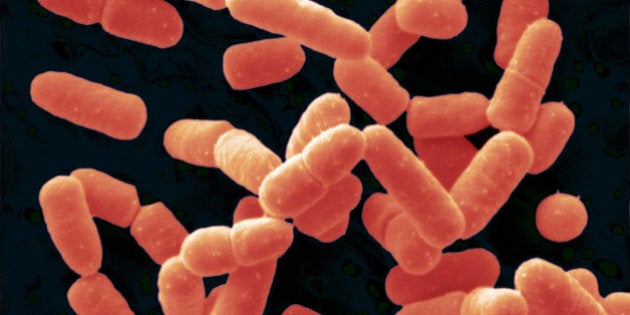
For over a century, a variety of good bacteria has been extoled as a means to improve our general health. Today, these helpful microbes are better known as probiotics. When taken, according to the definition, a person can expect to receive some form of a health benefit.
The actual list of probiotic species is relatively small with the majority of species coming from the Lactobacillus or Bifidobacterium genera. They are without a doubt the most studied and offer the best value for the money. Yet, while these two are dominating the probiotic field, other species have slowly made their way from the papers of academia to store shelves.
The latest in this trend is a bacterium known as Bacillus coagulans. It was first described in 1915, although it was considered to be a problem, not a solution. It rapidly coagulated evaporated milk, rendering it useless. Because of the spoilage issue, the bacterium was one to avoid at all costs.
As research into the nature of the bacterium continued, one particular trait was unveiled: it was extremely hardy in extreme environments. The reason was due to a twist in the life cycle of the bacterium. Instead of simply living and dying, it had the ability to develop a dormant state in the form of a spore. This would allow the bacterium to withstand any environmental storm and then return to normal growth once the danger had subsided.
For decades, the focus on Bacillus coagulans was not surprisingly on control. Dairy manufacturers had to deal with a resilient organism capable of spoiling all types of products. But eradication was simply not possible as the species was widespread, particularly in cattle. All that could be done was to look for the bacterium and hope it could be detected and controlled in time.
But the perspective on the bacterium changed around the end of the last century. It had little to do, however, with food production. Instead, the reason for the psychological shift dealt with the growing threat of antimicrobial resistance. Even though the crisis call from the World Health Organization was over a decade and a half away, researchers were trying to find alternatives to stave off the post-antibiotic era.
In 1998, one option was found. Instead of an antibiotic, researchers identified an antimicrobial chemical known as a bacteriocin in the feces of cattle. In the hunt for the source, the team found the molecule was produced by the old dairy enemy. Over the coming years, the tests with B. coagulans revealed it could kill a variety of pathogenic bacteria, including Listeria and, more importantly, antibiotic resistant bacteria.
The lab and animal results eventually translated into human studies. But instead of using the bacteriocin chemical, researchers used the bacterium as a whole. In essence, they were using B. coagulans as a probiotic. Studies were performed to assess safety, reduction of diarrhea, and even secondary symptoms such as arthritis. In all these cases, the results revealed the bacterium was an ideal candidate for a probiotic. By 2012, a monograph for the bacterium was released.
The compilation of research on B. coagulans revealed a number of probiotic benefits similar to those of Lactobacillus and Bifidobacterium. Yet, to find room in the minds of the public, this new species needed to demonstrate an even greater benefit in order to gain widespread interest.
To meet this requirement, studies have explored a variety of possible options to show the benefit of this new probiotic species. Some have been relatively straightforward, such as the reduction of gas. Others have been more medically focused on Clostridium difficileinfection. One of the more adventurous directions involves the use of the species during HIV infection. In all cases, the bacterium seems to have more to offer.
Now it seems there is another addition to the list. A group of Indian researchers have revealedB. coagulans may be helpful in those suffering from Irritable Bowel Syndrome (IBS). The team conducted a clinical trial in which 31 individuals were given either a daily dose of 20 billion bacteria or a placebo. The test was conducted for 3 months with regular visits to determine any effects on symptoms. By the end of the study, the bacterium had proven to be effective in IBS sufferers, reducing the frequency of bloating, vomiting, diarrhea, and especially abdominal pain. The results were so positive the team suggested this may be a novel direction for those wishing to manage symptoms.
Despite the positive results of the trial, the bacterium still needs to undergo further testing in order to understand the mechanism of action at the molecular and cellular level. Yet, this evidence in combination with previous studies suggests the addition of this species to the probiotic list is inevitable. This also means you may soon see it as a regular member of the microbial options on the shelves of your local probiotics supplier.
Follow HuffPost Canada Blogs on Facebook